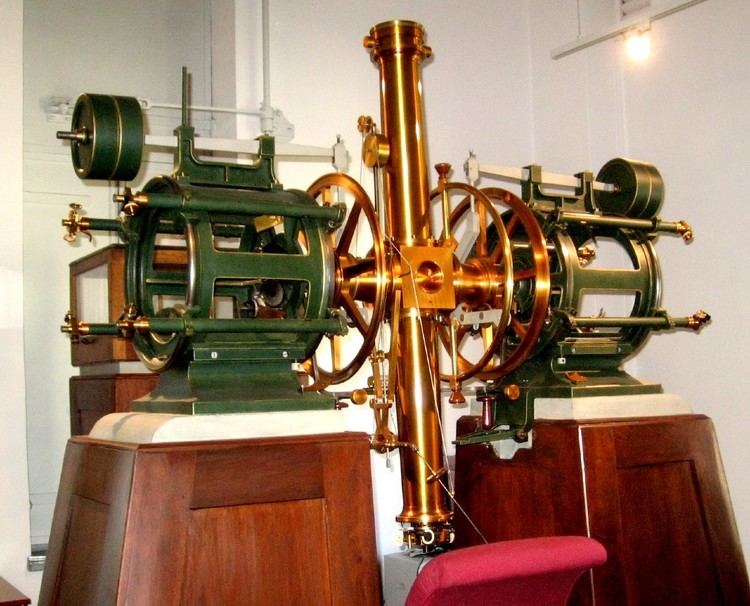In astronomy, transit instruments are used for the precise observation of star positions. The instruments can be divided into three groups:
for observation of star transits in the exact direction of South or North:
Meridian circles, Mural quadrants etc.
Passage instruments (transportable, also for prime vertical transits)
which allow transit measurements in any direction
Theodolite (Describing a theodolite as a transit may refer to the ability to turn the telescope a full rotation on the horizontal axis, which provides a convenient way to reverse the direction of view, or to sight the same object with the yoke in opposite directions, which causes some instrumental errors to cancel.) (Wolf and Brinker 183–6)
Altaz telescopes with graduated eyepieces (also for satellite transits)
Cinetheodolites
Zenith instruments and Astrolabes
Zenith telescope
Photozenith tube (PZT)
zenith cameras
Danjon astrolabe, Zeiss Ni2 astrolabe, Circumzenital
Observation techniques and accuracy
Depending on the type of instrument, the measurements are carried out
visually and manual time registration (stopwatch, Auge-Ohr-Methode, chronograph)
visually by impersonal micrometer (moving thread with automatic registration)
photographic registration
CCD or other electro optic sensors.
The accuracy reaches from 0.2" (theodolites, small astrolabes) to 0.01" (modern meridian circles, Danjon). Early instruments (like the mural quadrants of Tycho Brahe) had no telescope and were limited to about 0.01°.

